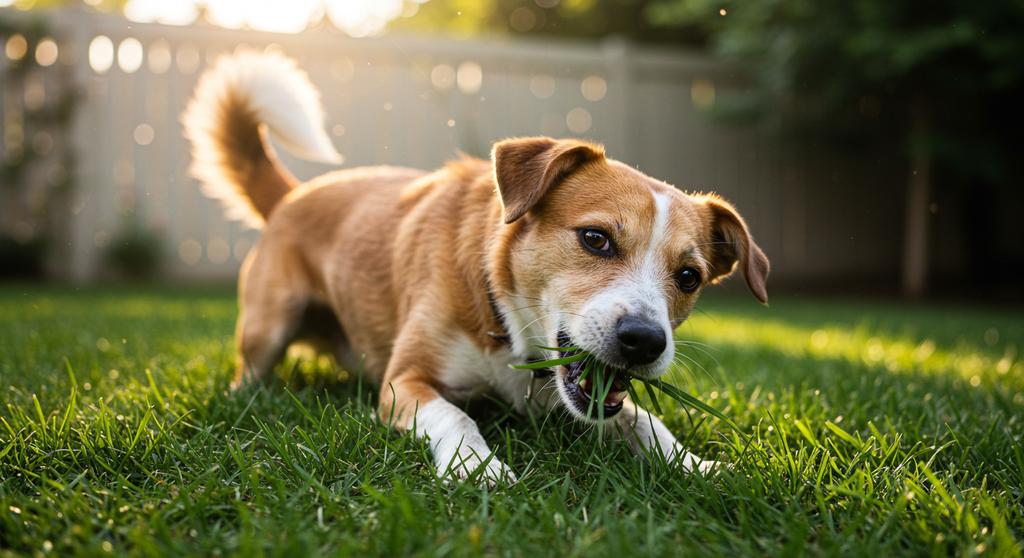In our quest for the perfect, weed-free lawn, many homeowners turn to chemical herbicides and pesticides. But what if that pristine yard comes at a devastating cost to our furry friends? Recent studies have revealed a chilling link: Dogs exposed to lawn chemicals like Roundup are up to 70% more likely to develop lymphoma, a deadly form of cancer. Spraying for a “perfect” yard might be unknowingly poisoning your pets. In this article, we’ll dive into the science behind this risk, how exposure happens, and what you can do to protect your dog while still maintaining a beautiful lawn.
The Alarming Link Between Lawn Chemicals and Canine Cancer
Cancer is one of the leading causes of death in dogs, and environmental factors play a significant role. Lymphoma, also known as lymphosarcoma, affects the lymphatic system and can spread rapidly if not caught early. But why are lawn chemicals implicated?
A landmark 2012 study from Tufts University’s Cummings School of Veterinary Medicine, published in Environmental Research, analyzed over 800 dogs and found that those exposed to professionally applied lawn pesticides had a 70% higher risk of developing malignant lymphoma compared to unexposed dogs. This isn’t an isolated finding. An earlier 1991 study in the Journal of the National Cancer Institute linked the herbicide 2,4-D—commonly found in many lawn treatments—to a doubled risk of lymphoma in dogs whose owners used it on their yards.
Roundup, Monsanto’s (now Bayer’s) popular weed killer, contains glyphosate as its active ingredient. While the EPA classifies glyphosate as “not likely to be carcinogenic to humans,” the World Health Organization’s International Agency for Research on Cancer (IARC) labels it as “probably carcinogenic.” For dogs, the concern is even greater because they spend more time close to the ground, rolling in grass and licking their paws. A 2013 study detected herbicide residues like 2,4-D and glyphosate in the urine of dogs even from homes that hadn’t recently applied chemicals, suggesting drift from neighboring properties.
Beyond lymphoma, other cancers are linked too. Research from Purdue University showed that Scottish Terriers exposed to herbicide-treated lawns were 4 to 7 times more likely to develop bladder cancer (transitional cell carcinoma). These studies highlight a pattern: Chronic exposure to herbicides and pesticides increases cancer risks in our canine companions.
For more in-depth reading on this topic, check out this comprehensive blog post on chemically treated lawns and canine cancer risk, which breaks down regional implications, especially in areas like South Florida where lawn treatments are common.
How Do Dogs Get Exposed?
Dogs aren’t just bystanders—they interact intimately with their environment. Here’s how exposure typically occurs:
- Direct Contact: Walking, playing, or rolling on freshly treated lawns allows chemicals to stick to fur, paws, and skin.
- Ingestion: Dogs groom themselves by licking, ingesting residues. They might also eat grass or drink from puddles contaminated with runoff.
- Inhalation: Volatile chemicals can be breathed in, especially right after application.
- Indirect Exposure: Even if you don’t treat your yard, wind, rain, or neighboring applications can carry chemicals over.
A six-year study at Tufts University reinforced this, linking lawn chemicals directly to a 70% spike in lymphoma cases. Shockingly, residues can persist for days or weeks, depending on weather and product type.
The Controversy Around Roundup and Glyphosate
Roundup has been at the center of lawsuits and debates for years, primarily over human health risks like non-Hodgkin lymphoma. A 2019 meta-analysis suggested chronic glyphosate exposure could raise human lymphoma risk by about 41%, prompting concerns for pets. While no study definitively proves Roundup causes cancer in dogs, the parallels are hard to ignore. Dogs metabolize these chemicals differently, and their higher exposure levels amplify potential dangers.
Veterinary experts urge caution: “Better safe than sorry,” as one oncologist put it in discussions around these studies. If you’re using Roundup or similar products, consider the long-term impact on your pet’s health.
Protecting Your Pet: Safer Alternatives and Tips
The good news? You don’t have to sacrifice your lawn for your dog’s safety. Here are practical steps to reduce risks:
- Switch to Natural Alternatives: Opt for pet-safe options like vinegar-based sprays, corn gluten meal for weed prevention, or iron-based herbicides (e.g., Fiesta®). Biological controls, such as beneficial nematodes, can handle pests without toxins.
- Adopt Integrated Pest Management (IPM): Focus on healthy lawn practices—proper mowing, watering, and soil aeration—to minimize chemical needs. Spot-treat weeds instead of blanket spraying.
- Post-Application Precautions: If you must use chemicals, keep dogs off the lawn until it’s completely dry (at least 48 hours for some products). Rinse paws and bellies after outdoor time to remove residues.
- Go Organic or Native: Consider Florida-friendly landscaping with native plants that require less maintenance and fewer chemicals. This not only protects pets but also benefits local ecosystems.
- Monitor and Consult: Watch for cancer signs like swollen lymph nodes, lethargy, or weight loss. Regular vet check-ups are crucial, especially for breeds prone to lymphoma like Golden Retrievers or Scottish Terriers.
For additional resources, explore this article on lawn chemicals and dog cancer or studies linking pesticides to canine lymphoma.
Conclusion: Prioritize Your Pet’s Health Over a Perfect Lawn
Our dogs bring joy, loyalty, and love into our lives—it’s our responsibility to safeguard them from hidden hazards. The evidence is clear: Exposure to lawn chemicals like Roundup significantly heightens the risk of lymphoma and other cancers in dogs. By choosing safer alternatives and staying informed, you can create a yard that’s beautiful and pet-friendly.
Remember, a healthy dog is worth far more than a flawless lawn. Share this article if you have a pet-loving friend, and let’s spread awareness to protect our four-legged family members.
For more insights on pet safety and environmental risks, visit Floridist.com’s blog on chemically treated lawns and canine cancer.
15 web pages
